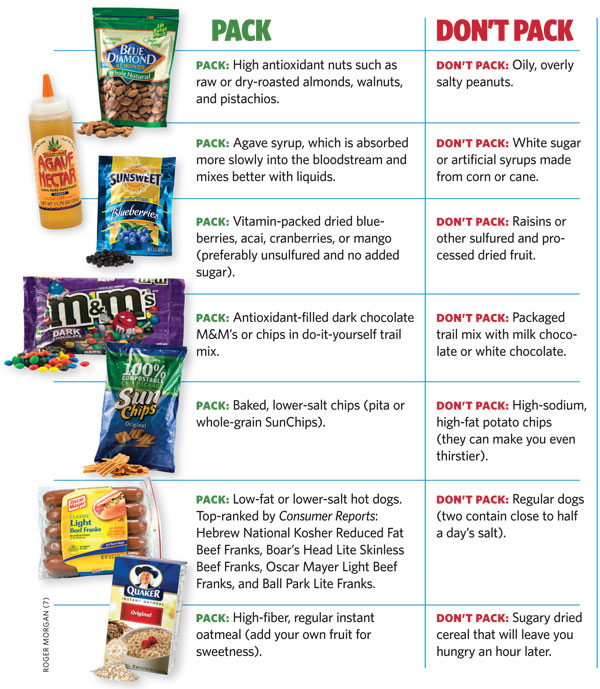
To Pack, or Not to Pack?
Choosing the right foods for your kids' next camp-out.
By Candy Sagon
Healthy food plays a big role in a successful camp-out. But making the right choices for you and your boys can be tricky.
Camping and Scout experts Tim and Christine Conners of Statesboro, Ga., say choosing the wrong food items for energy and nutrition is a common mistake. The authors of The Scout’s Outdoor Cookbook, the Conners frequently take 50-mile bike rides with their four kids, and Tim helps plan the food and coordinate the camping trips for their sons’ Scout troop.
They say campers often overlook the importance of snacks that provide protein and complex carbohydrates to maintain energy during high-endurance outings.
Your snacks, they emphasize, “should pack a nutritional punch.” So when drawing up your list, here are some “pack, don’t pack” tips from the experts:

TO-DO LIST
The mother of three boys, New York dietitian Bonnie Taub-Dix has authored a new book on food labels—Read It Before You Eat It—that led her to check the nutritional content of many popular food products. She offers this advice for both Scout leaders and their Scouts:
Go nuts. They’re full of heart-healthy substances such as unsaturated fat, omega-3 fatty acids, and vitamin E. They’re also high in fiber, which helps you feel full. Almonds and walnuts are particularly heart-healthy.
Eat oatmeal. The most recent 2008 study reaffirms what experts have been saying since the 1980s: Oatmeal helps reduce the risk of heart disease and diabetes. Avoid the sugary, flavored kind and add your own dried fruit plus nuts for crunch and protein.
Watch the salt. A 2010 study by the Institute of Medicine says that the sodium level in many processed foods is unsafe and contributes to high blood pressure and heart disease. Check the labels before buying too many packaged foods and treats.
Remember calcium. If possible, take cheese, yogurt, or milk along on overnights, says Taub-Dix. The calcium and vitamin D in these foods will help strengthen growing bones.